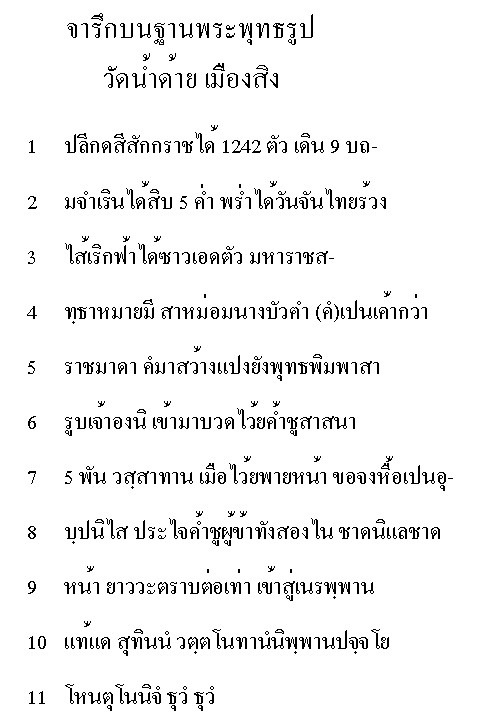

original document:
NOV 2000
reconditioned:
AUG 2019

This Buddha is the evidence of a new settlement of Müang Sing about 1880.
On the rear side of the pedestal of this Buddha there is a dedication, written in Tham-script and in Pali language, dated C.S. 1242 (C.S. = Cunlasakkarat).
This corresponds to A.D. 1880/81 (as the Buddhist year begins in April, the difference A.D./C.S. is in the first three months of the Christian year 639 years and in the last nine months 638 years).
Cunlasakkarat: "the small calendar" in contrast to Mahasakkarat, the "large calendar (A.D. -78 years)". Cunlasakkarat comes from Sri Lanka and was used by the Burmese. Since the mid of the 16th century the Siamese, Lao and Khmer used this calendar. At that time Burma was the undisputed hegemonic power in SE-Asia.
The dedication by Nang Buakham is engraved in the rear of the pedestal.




